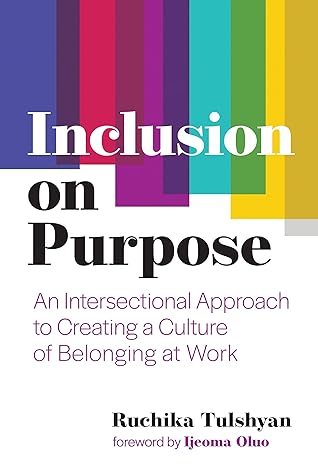More on this book
Community
Kindle Notes & Highlights
Read between
October 6 - October 13, 2022
Women of color usually receive the opposite of effective feedback in informal exchanges and formal performance reviews alike. It’s often unhelpful, such as “you’re doing fine” or “I can’t put my finger on what you’re doing well, but you’re good,” without offering specifics on actions or behaviors taken, and thus they don’t know exactly what to repeat. Effective feedback would instead be, “Here’s exactly what you did and here’s exactly the impact it had.” In this way, they would know exactly which actions to repeat or avoid.
When white women display anger, which eschews traditional norms of femininity and nurture, they’re often called crazy, but that’s treated as an individual character flaw. For women of color, the feedback becomes racialized, “such as being called a ‘hysterical Latina woman,’ or ‘angry, Black woman,’ or ‘sad Asian woman,’” Chemaly notes. A white woman’s race isn’t weaponized on top of the gender bias that they face. When white women are perceived as angry, it’s considered a one-off character trait, but for women of color, it builds on a negative stereotype that already impacts their career
...more
“To give helpful and fair feedback, get real clear on the ‘why.’ Oftentimes we give feedback because we believe it’s our job as managers and we think it’s the right thing to do,” she says. But before you even utter the feedback, take a moment to ask yourself, What is my intention here? “And if your intention is not focused on that person’s development and growth, then reconsider giving the feedback.”
“Critical feedback conversations are often tense for everyone involved. Articulating your intention from the beginning ensures that it’s not open for interpretation,”
Here’s an illustration. The typical SBI framework would dictate this as adequate feedback: “Your presentation on the importance of social media marketing this morning could have been more effective [situation] because there were no customer testimonials [behavior]. When executive team members don’t see customer data, they may not see the value of using it [impact]. Include this next time to bring more visibility to your work.” My edit to this SBI would be: “Your presentation on social media marketing this morning had robust research, which was really effective [situation and positive
...more
A woman of color is seen as an exceptional individual at that moment, but she’s also fighting an uphill battle against the perception that people of her group are not expected to be exceptional. She constantly has to prove her merit to be thought deserving of the accolade and often ultimately isn’t awarded it.
She realized, true to her original assessment, that no one else on her team understood the gravity of what she had just experienced.
I know that the lack of diversity in the media deeply impacts the diversity of stories told and plurality of viewpoints represented. Experts say this erasure can even impact the future of democracy. Much of this lack of representation is blamed on people of color, particularly women of color, not being able to “make it” in the cutthroat journalism industry. But as Kulkarni’s experience illustrates (among countless others), without psychological safety in their workplaces, we risk losing bright and determined women of color. It is to the detriment of society.


